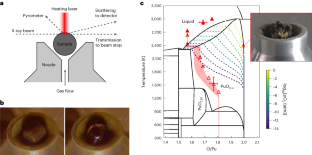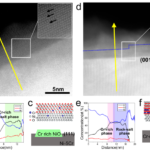2024-09-05 パシフィック・ノースウェスト国立研究所(PNNL)
 Excessive rainfall during the summer monsoon season can have a devastating impact, causing severe flooding.(Photo: NASA)
Excessive rainfall during the summer monsoon season can have a devastating impact, causing severe flooding.(Photo: NASA)
<関連情報>
- https://www.pnnl.gov/publications/examining-how-energy-transport-affects-global-monsoons-climate-models
- https://journals.ametsoc.org/view/journals/clim/37/18/JCLI-D-23-0444.1.xml
大気エネルギー輸送の観点から全球モンスーンシミュレーションの偏りを理解する Understanding the Biases in Global Monsoon Simulations from the Perspective of Atmospheric Energy Transport
Ziming Chen,Tianjun Zhou,Xiaolong Chen,Lixia Zhang,Yun Qian,Zeyi Wang,Linqiang He, andL. Ruby Leung
Journal of Climate Published:22 Aug 2024
DOI:https://doi.org/10.1175/JCLI-D-23-0444.1
Abstract
Understanding global monsoon (GM) variability and projecting its future changes rely heavily on climate models. However, climate models generally show pronounced biases in GM simulations, and the reasons for this remain unclear. Here, we evaluate the performance of 20 pairs of climate models that participated in both phase 5 of the Coupled Model Intercomparison Project (CMIP5) and phase 6 of CMIP (CMIP6) and identify the sources of their GM simulation biases from an energy transport perspective. The multimodel mean improvement in CMIP6 compared to CMIP5 is demonstrated by the increasing skill scores for various GM metrics from 0.20–0.79 to 0.48–0.83. More specifically, the dry biases in the Northern Hemisphere Summer Monsoon (NHSM) precipitation in CMIP5 [root-mean-square error (RMSE): 1.85 mm day−1] are reduced in CMIP6 (RMSE: 1.66 mm day−1). This higher simulation skill is associated with higher skill in simulating the precipitation-solstitial mode, monsoon intensity, and monsoon domains. The improvement in the NHSM precipitation simulation results from that in the meridional transport of atmospheric energy. Atmospheric energy budget analysis shows that the negative biases in downward surface longwave radiation and northward energy transport are smaller in CMIP6 than in CMIP5 in the boreal summer, resulting in a more realistic interhemispheric thermal contrast and meridional gradient of moist static energy. However, a major weakness of the CMIP6 models is found in the Southern Hemisphere Summer Monsoon precipitation simulation due to the positive bias in the top-of-the-atmosphere downward longwave radiation. This study shows that reasonably reproducing the meridional global atmospheric energy transportation is necessary for skillful GM simulation.



